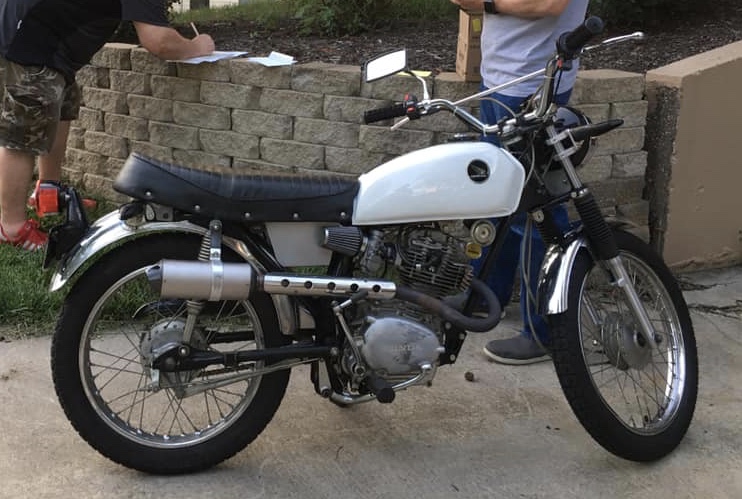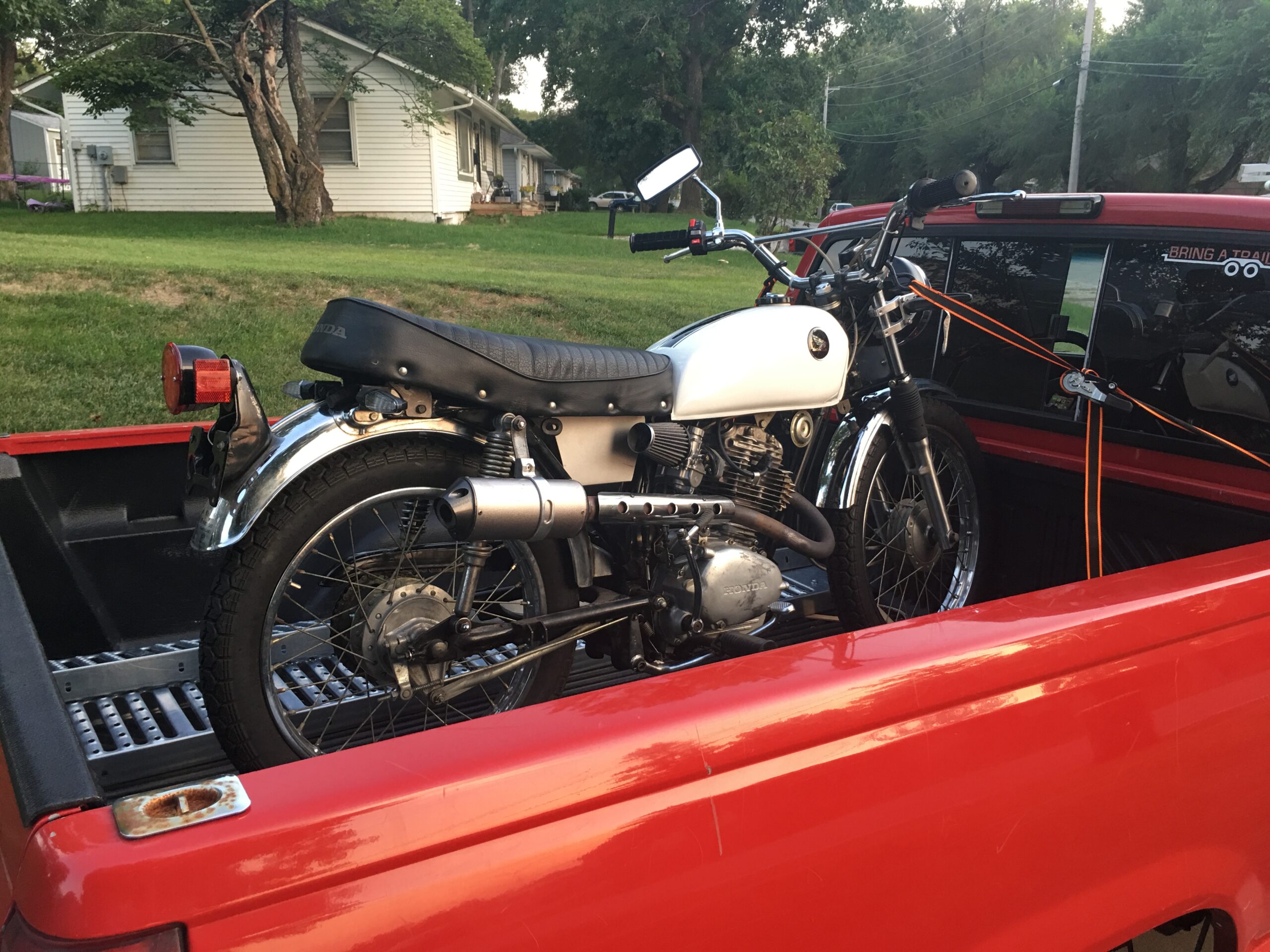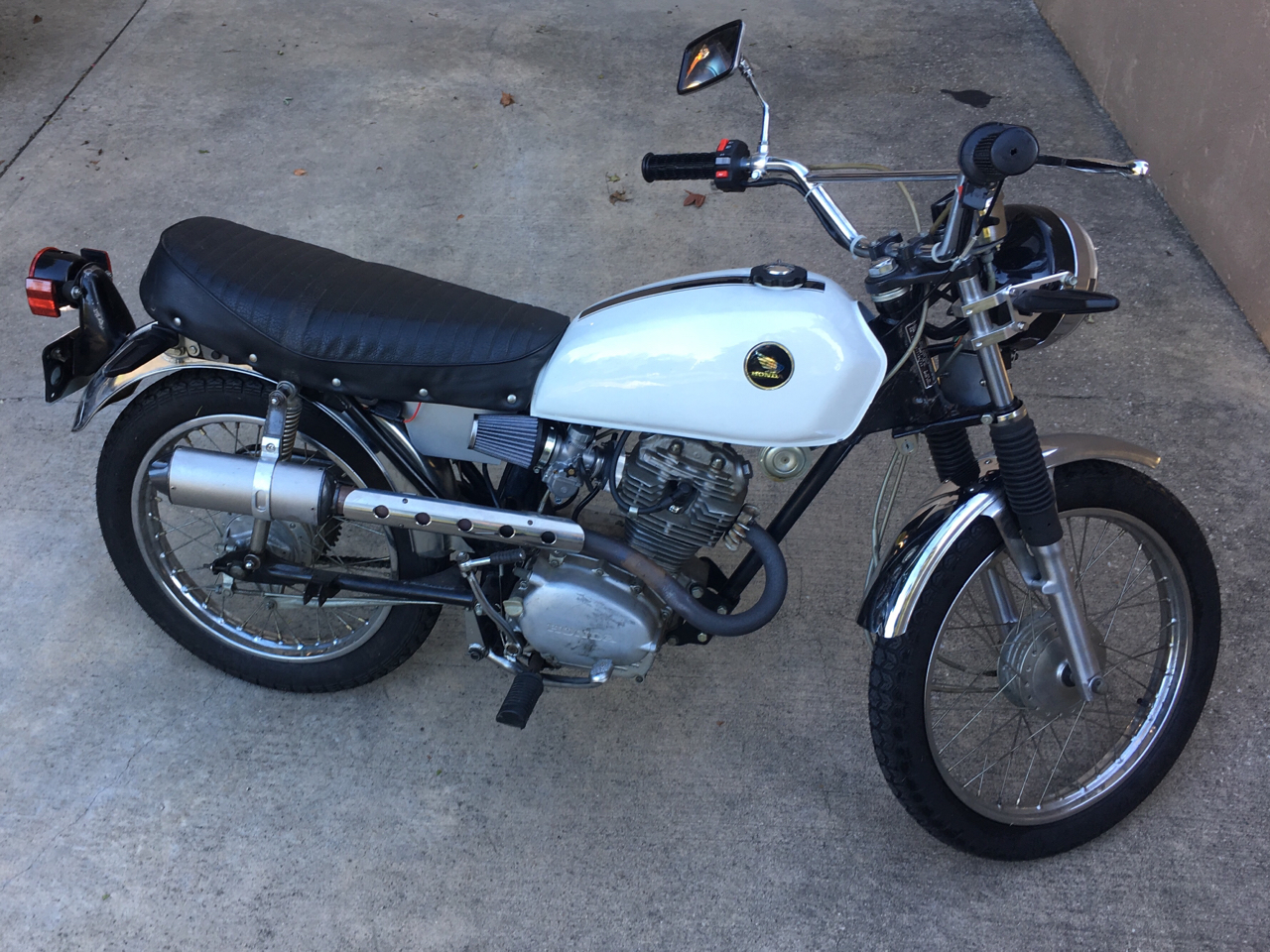
Having just come back from a cruise through my neighborhood, I can report with some excitement that my ’74 Honda CL125S is officially back on the road. I haven’t ridden the bike hardly all since first getting it running two years ago. When I last posted, my a shakedown run 14 months ago revealed a multitude of electrical and carburetion issues, thanks to years of neglect and some stupidly executed “fixes” by a previous owner. Also, the third used, replacement Honda speedometer I’d purchased lasted about a quarter-mile before its insides exploded.
My original intention to keep it as stock as possible was finally abandoned completely, because the original Honda versions of the original parts were all either 1) impossible to find or, 2) obscenely expensive. The instruments, turn signals, switchgear, handlebar levers, and throttle have now been replaced with non-OE parts, removing nearly everything from the rider’s view that had reminded me of my first bike to begin with. Unfortunately, after four decades of poorly executed patches and repairs by a string previous owners, the thing was a diagnostic quagmire. Add to the mix a mismatched selection of “universal fit” parts made in Indonesia, and things got unexpectedly complicated along the way.
First of all, I gave up and bought a new, generic mini “chopper” speedometer. Since the indicator lights were originally housed inside the speedometer, I also purchased a stand-alone idiot light panel originally from a Honda CB350 twin and swapped out the 12V bulbs for 6V. I need to strip my template paper off the bracket and either paint it flat black or give it a good buffing. (I’m leaning towards black, since shiny stuff can reflect the sun right back in the rider’s eyes.) I also might relocate the speedometer a bit closer to the handlebars.

The biggest hang-up was an electrical problem that I just couldn’t figure out, despite tracing it down to the left-side handlebar switch unit. I also needed to do something about the balky throttle twistgrip (Honda’s weird-alice internal cable design). Since the original swiches, levers and throttle were all integrated into cast metal housings, I bought all-new, generic switches, levers, and external throttle off Ebay. After installing them, no matter how I tried, I couldn’t get the lights to work properly. After messing around with it in my free time over the course of several months, I finally concluded that I was just too stupid to fix it, pushed the thing into a corner of the garage in defeat, and left it there for most of 2017. Well, one Saturday morning last month I gave myself a pep talk and started over, troubleshooting from scratch. I then discovered the bizarre malfunction that I demonstrated in my previous post. Once I’d figured out that the replacement unit was bad, I ordered an Emgo universal switch pod. That ended up being a fairly straightforward installation last weekend.

Meanwhile, I filled, charged, and installed a new 6-volt battery. Then, this morning before work, I hooked up the new throttle cable (actually intended for a TRX125 four-wheeler), rolled the bike out into the driveway, and give it a good kick. And another. And another. After enough kicks, I moved on to bump-starting. After numerous attempts and I had a good sweat going and it was clear that something was amiss. I pulled the spark plug and held it against the head as I kicked—no spark. Oh, crap, I had screwed up the wiring somewhere. Wait, I thought: the kill switch on this bike works by grounding the coil, not by disconnecting it. Could it be that easy? I switched the aftermarket kill switch to the “stop” position and give it another kick. My effort was met with a bright, blue spark.

I reinstalled the spark plug and moments later the bike roared to life. I fiddled with the idle adjustment screw and soon she was ticking over evenly, something I had never been able to make happen with the old, sticky throttle. I took it out for a couple miles around the neighborhood and it ran flawlessly.
Having the bike on the road doesn’t mean it’s anywhere finished. The fuel cap still weeps slightly, the rear brake is only marginally effective, and the bike still needs a lot of cosmetic work including a real paint job. Unfortunately, so much time has passed since I finished the exhaust system that I’ll need to knock off some surface rust before I can shoot the pieces with high-temp flat black paint. I also need to play with the weight and volume of oil in the front forks and I might replace the somewhat dim turn signals with some better quality, brighter units. I haven’t enough looked at the points.
But regardless of what needs to be done, I’m thinking I might ride it the 25-mile round trip to work some day this week. That will be fun.


